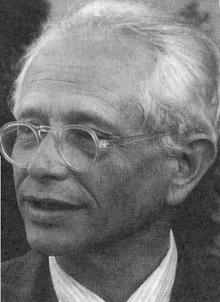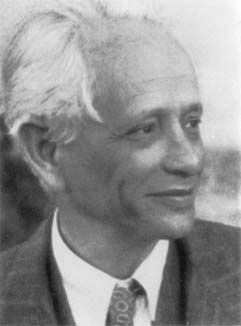

Max Dehn Seminar
on Geometry, Topology, Dynamics, and Groups
Spring 2019 3:15-4:15 JWB 308
| Date | Speaker | Title click for abstract (if available) |
| October 4 10:45-11:45 in JWB 240
|
Daniel Studenmund
Notre Dame |
Commensurability growth of nilpotent groups
A classical area of study in geometric group theory is subgroup growth,
which counts the number of subgroups of a given group Gamma as a
function their index. We will study a richer function, the
commensurability growth, which is a function associated to a subgroup
Gamma in an ambient group G. This talk covers the case that Gamma is an
arithmetic subgroup of a unipotent group G, starting with the simplest
example of the integers in the real line. This is joint work with Khalid
Bou-Rabee.
|
| December 14 at 3:15 in LCB 219
|
Priyam Patel
University of California, Santa Barbara |
Homomorphisms of pure mapping class groups to the
integers
A classical theorem of Powell (with roots in the work of Mumford and
Birman) states that the pure mapping class group of a connected,
orientable, finite-type surface of genus at least 3 is perfect, that is,
it has trivial abelianization. We will discuss how this fails for
infinite-genus surfaces and give a complete characterization of all
homomorphisms from pure mapping class groups of infinite-genus surfaces
to the integers. This is joint work with Javier Aramayona and Nicholas
Vlamis.
|
| January 16
|
Jing Tao
University of Oklahoma |
Big Torelli Groups
I will discuss some joint work with Aramayona, Ghaswala, Kent, McLeay,
and Winarski on the Torelli subgroup of big mapping class groups.
|
| January 23
|
James Farre
University of Utah |
Hyperbolic Volume, Group Actions, and Bounded
Cohomology
Bounded cohomology admits an almost entirely algebraic definition (which
we give in the talk), but many examples come from geometric
constructions. Any isometric action of a discrete group G on hyperbolic
n-space defines a class in bounded cohomology which measures the
hyperbolic volume of geodesic simplices whose vertices are contained in
an orbit G.x. We explain a sufficient condition, phrased in terms of
the discrete subgroups of Isom(H^n) for the volume class of a dense
action to yield a non-zero class in bounded cohomology.
|
| February 13
|
Sara Maloni
University of Virginia |
The geometry of quasi-Hitchin symplectic Anosov
representations
In this talk we will focus on our joint work in progress with Daniele
Alessandrini and Anna Wienhard about quasi-Hitchin representations in
Sp(4,C), which are deformation of Fuchsian representations. We will show
that the quotient of the domain of discontinuity for the action of these
representations on the space of complex lagrangians Lag(C^4) is a fiber
bundle over the surface and we describe the fiber. In particular, we
will describe how the projection comes from an interesting
parametrization of the space Lag(C^4) of complex lagrangians as the
space of regular ideal hyperbolic tetrahedra and their degenerations.
|
| February 27
|
Sebastian Hensel
Mathematics Institute, University of Munich |
(Un)distorted stabilisers in the handlebody group
In the mapping class group of a surface, stabilisers of curves are
quasi-isometrically embedded for all curves. In this talk, we study a
similar question for mapping class groups of 3-dimensional handlebodies
and find a different picture (analogous to the situation in Out(F_n)):
stabilisers of meridians are quasi-isometrically embedded, while
stabilisers of other curves may be exponentially distorted.
|
| March 6
|
Osama Khalil
The Ohio State Universiy |
Diophantine Approximation on Fractals and Homogeneous
Flows
The theory of Diophantine approximation is underpinned by Dirichlet’s
fundamental theorem. Broadly speaking, the main questions in the theory
concern quantifying the prevalence of points with exceptional behavior
with respect to Dirichlet’s result. Badly approximable, very well
approximable and Dirichlet-improvable points are among the most
well-studied such exceptional sets. The work of Dani and
Kleinbock-Margulis connects these questions to the recurrence behavior
of certain flows on homogeneous spaces. After a brief overview of the
subject and the motivating questions, I will discuss new results giving
a sharp upper bound on the Hausdorff dimension of divergent orbits of
diagonal flows emanating from fractals on the space of lattices.
Applications towards Diophantine approximation will be presented.
|
| March 20
|
Fabrizio Catanese
Bayreuth |
Fibred algebraic surfaces: analytical and
topological aspects.
The first occurrence of topology in the study of fibred surfaces is the
Zeuthen-Segre formula, which I shall recall;
the second one is a consequence of the Castelnuovo De Franchis theorem,
which shows the topological nature
of maps to curves of genus at least two.
Kodaira fibrations illustrate the principle that the index is not
multiplicative for differentiable fibre bundles, and the theorems of
Fujita and Arakelov
relate this property to Variation of Hodge structure.
There are important open questions on fibred surfaces, one of them being
the Shafarevich conjecture.
I might mention, starting from the BCD surfaces which provide examples
where the monodromy on the flat unitary bundle
in the Fujita decomposition is of infinte order, some criterion which
ensures that the universal covering of a fibred surface S
is contractible.
I shall then discuss joint work with Corvaja and Zannier, and partial
results concerning commutators in the symplectic group and in the
mapping class group: these results are relatively exhaustive concerning
the symplectic group.
These questions arose from the question of understanding the singular
fibres in the somewhat mysterious Cartwright-Steger.
I shall then produce a simple example, of a fibration of the product of
two curves of genus 2 (or more) onto an elliptic curve,
with only one irreducible singular fibre.
This shows that the product of 4 homologically independent Dehn twists
is a commutator in Map_g for g at least 9.
|
| March 27
|
John Griesmer
Colorado School of Mines |
Rigidity in measure preserving dynamics via thin sets
in harmonic analysis
Poincaré's recurrence theorem says that if (X,mu) is a probability
measure space and T: X -> X is a transformation preserving mu, then for
every subset A of X having positive measure, there is a natural number n
such that the sets A and T^-n(A) have nonempty intersection. For a
fixed small number c, we consider the set R of times n when this
intersection has measure at least c. Such sets of "large intersection
times" have rich combinatorial structure. In particular they contain
perfect squares, a striking fact proved independently by Furstenberg and
A. Sárközy.
We will construct sets of large intersection times having (or lacking)
certain interesting features. The corresponding transformations have
will large rigidity sequences: sequences n_k along which the powers
T^n_k approach the identity transformation in a natural sense. Our
construction relies on Kronecker sets, a class of thin subsets of the
unit interval first studied in classical harmonic analysis.
|
| April 3
|
Aaron Calderon
Yale University |
Mapping class groups and deformations of flat surfaces
Flat cone metrics on surfaces (often in the guise of translation
surfaces or holomorphic 1-forms) are a fundamental object of study in
Teichmüller theory, billiard dynamics, and complex geometry. Fixing the
number and angle of the cone points defines a natural subvariety of the
moduli space of flat surfaces called a stratum, the global topology of
which is quite enigmatic. In this talk, I will explain which mapping
classes are realized by deformations contained in these strata, and how
this result can be applied to classify the connected components of
Teichmüller spaces of flat cone metrics. This talk represents joint work
with Nick Salter.
|
| April 17
|
Claire Burrin
Rutgers University |
Effective counting via Eisenstein series
Various questions concerning translation surfaces depend on counting
saddle connections. For a certain class of translation surfaces, this
reduces to the more general, yet more tractable problem of counting points
in discrete orbits for the linear action of a lattice of SL(2,R) on the
Euclidean plane. This can be done effectively, using either methods from
ergodic theory or from number theory. We will illustrate both methods and
discuss certain of their aspects. This is joint work with Amos Nevo, René
Rühr, and Barak Weiss.
|
Archive of past talks Max Dehn mailing list
You may also be interested in the RTG Seminar
Max Dehn Seminar is organized by Mladen Bestvina, Ken Bromberg, Jon Chaika,
Donald Robertson, Domingo Toledo, and Kevin Wortman.
This web page is maintained by Jon Chaika.

